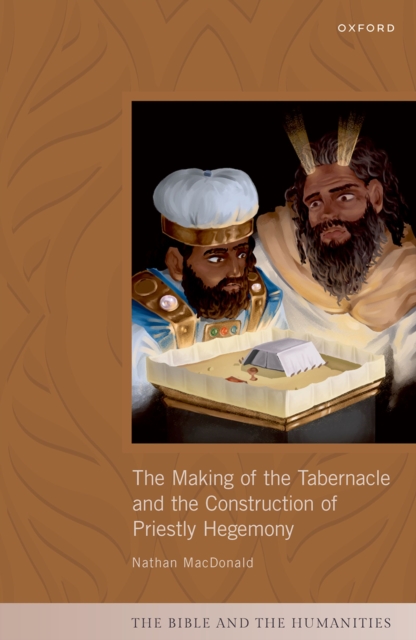
The Making of the Tabernacle and the Construction of Priestly Hegemony PDF
by Nathan MacDonald
Part of the The Bible and the Humanities series
Description
How did the Jerusalem high priests go from being cultic servants in the sixth century BCE to assuming political supremacy at some point during the third or second century?
The Making of the Tabernacle and the Construction of Priestly Hegemony examines how the conditions were created for the priesthood's rise to power by examining the most important ideological texts for the high priests: the description of the wilderness tabernacle and the instructions forthe ordination ritual found in the Biblical books of Exodus and Leviticus.
Although neglected by many modern readers, who often find them technical and repetitive, the tabernacle accounts excited considerable interest amongst early scribes and readers, as is evidenced by the survival of them in no fewer thanfour versions. Untangling this intricate compositional history helps shed light on how these chapters in the Pentateuch shaped-and were shaped by-the perception of the priesthood's powers and competencies during the Persian and early Hellenistic periods.
The hierarchy that is developed is more nuanced and multifaceted than previously appreciated, with Israelite artisans, community leaders, Levites and women incorporated into a complex vision of society.
The ordination ritual was also transformed by scribalelites during the Persian period, appearing in no fewer than five variant forms as the role of the high priesthood and its relationship to other groups was negotiated. Using a broad, plural methodological approach that incorporates insights from sociology, ritual studies, textual and literary criticism, early interpretation, manuscript studies, and philology, Nathan MacDonald's study shines new light on the historical development, theology, and ideology of priestly texts in the Pentateuch.
Information
-
Download - Immediately Available
- Format:PDF
- Pages:336 pages
- Publisher:OUP Oxford
- Publication Date:06/09/2023
- Category:
- ISBN:9780192543387
Other Formats
- EPUB from £58.79
Information
-
Download - Immediately Available
- Format:PDF
- Pages:336 pages
- Publisher:OUP Oxford
- Publication Date:06/09/2023
- Category:
- ISBN:9780192543387










